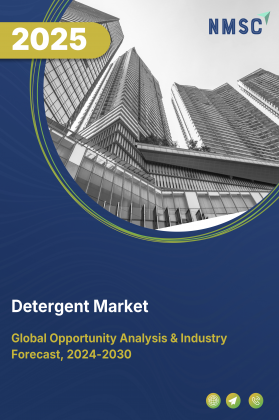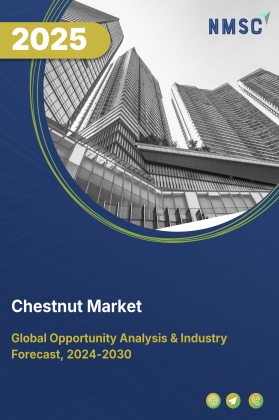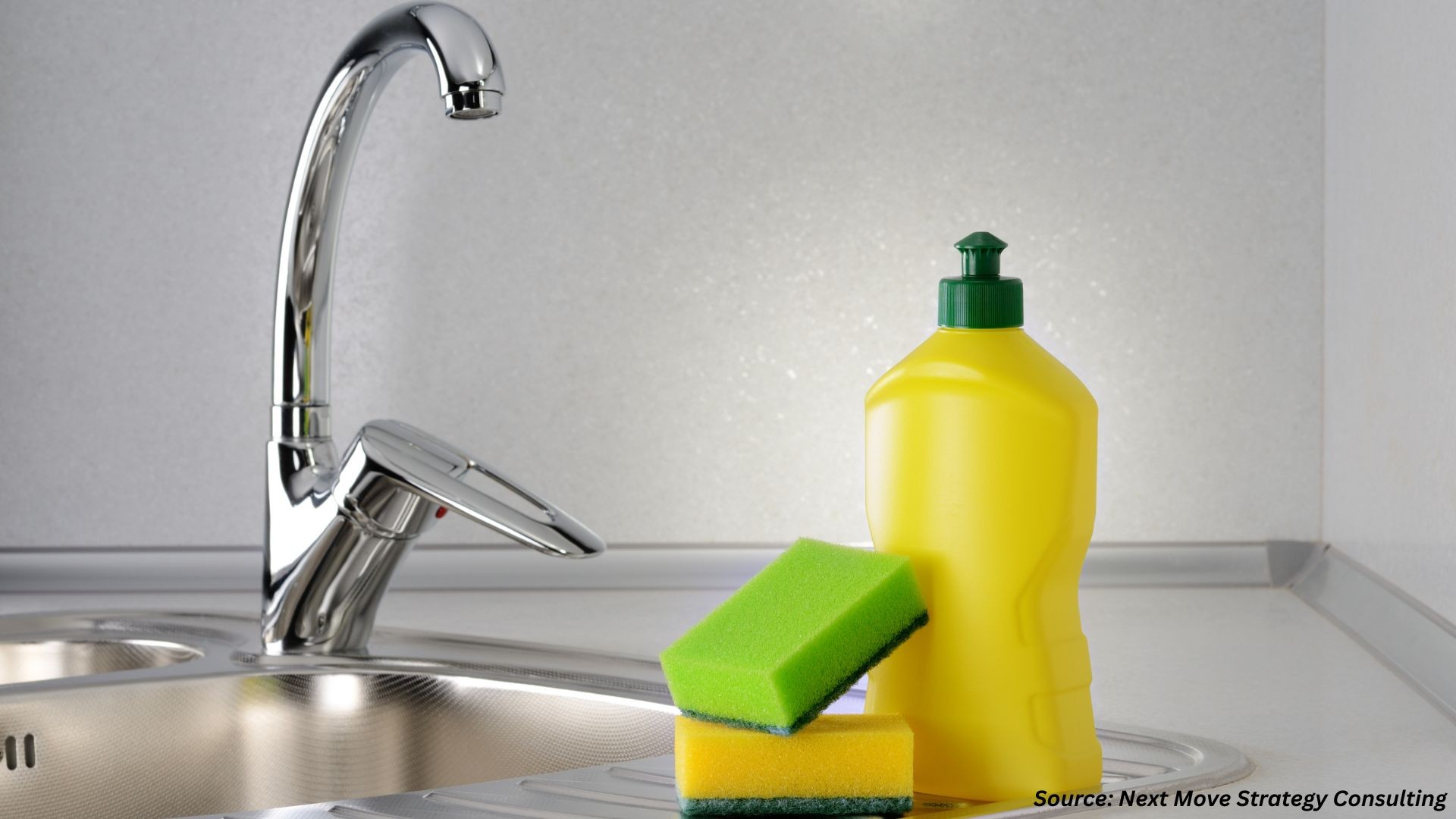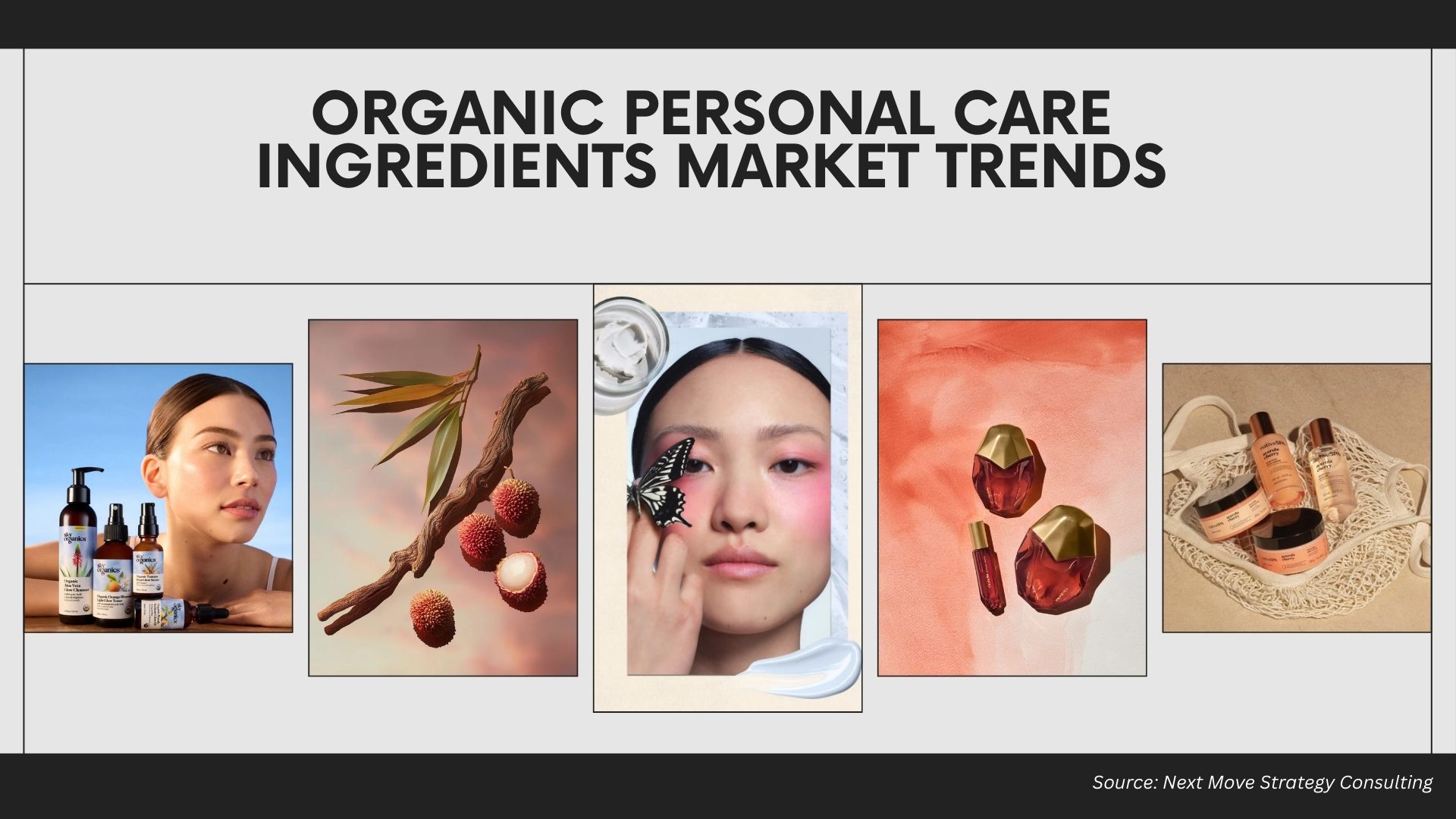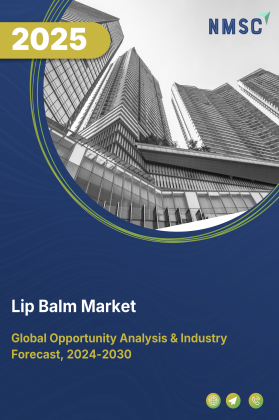
Lip Balm Market by Product Type (Solid Cream, Liquid Gel, Stick, Tub), by Formulation (Organic, Non-Organic, Beeswax-Based, Vegan), by Functionality (Moisturizing, SPF-Infused, Tinted, Anti-Aging, Plumping), by Consumer Demographics (Women, Men, Children, Seniors), by Distribution Channel (Supermarkets & Hypermarkets, Pharmacies & Drugstores, Online Retailers, Specialty Stores, Others) – Global Analysis & Forecast, 2025–2030
Industry Outlook
The global Lip Balm Market size was valued at USD 61.87 billion in 2024, and is expected to be valued at USD 65.70 billion by the end of 2025. The industry is projected to grow, hitting USD 88.76 billion by 2030, with a CAGR of 6.2% between 2025 and 2030.
The market is undergoing rapid transformation, driven by urbanization, rising disposable incomes, increasing awareness of personal grooming, and growing demand for premium and natural lip care products. Globally, demand for safe, dermatologically tested, and eco-conscious lip balms is rising sharply, fueled by expansion in retail networks, e-commerce platforms, beauty and wellness industries, and health-conscious consumer segments.
Growth in online retail, subscription-based beauty boxes, and smart retail solutions further intensifies the need for innovative product formulations, packaging, and marketing strategies. Advancements in natural and organic ingredients, multifunctional formulations with SPF and medicated benefits, flavor innovations, and sustainable packaging are reshaping product offerings, enhancing consumer experience, and fostering strong brand loyalty.
What are the Key Trends in the Lip Balm Market?
What major technological advancements are influencing the market?
Technological innovation is significantly reshaping the lip balm market trends. Cold-pressed oil extraction, plant-based waxes, and natural butter formulations are enhancing product safety and nourishment. Glycerin- and vitamin-enriched solutions improve hydration and healing, while automated production lines deliver consistent quality and scalability.
AI-driven consumer insights are enabling personalized lip care solutions based on lifestyle, preferences, and skin needs. Furthermore, sustainable technologies such as biodegradable packaging, refillable tubes, and waste-reduction processes are gaining importance as brands align with eco-conscious values.
How is demographic change impacting the lip balm market?
Demographic shifts are fueling demand for diverse lip balm offerings. In emerging markets, rising disposable incomes, urbanization, and population growth are boosting consumption of both affordable and premium lip balms. Younger, style-conscious consumers are gravitating toward tinted, vegan, and flavored products, while aging populations in developed economies prefer medicated, moisturizing, and SPF-based formulations. This demographic evolution is driving brands to create tailored, multifunctional product portfolios for different consumer groups.
What role does government regulation and support play in the lip balm market?
Government policies and regulations play a vital role in shaping the lip balm market share. Strict guidelines on cosmetic safety, chemical usage, and labeling ensure consumer trust and product credibility. Eco-friendly packaging mandates and sustainability initiatives are pushing brands to adopt greener practices. Additionally, incentives for domestic manufacturing, MSME participation, and fair-trade certifications support market competitiveness and innovation.
How are consumer preferences changing in the lip balm market dynamics?
Consumer preferences are evolving toward premium, customized, and multifunctional lip balms. Shoppers increasingly seek products that align with lifestyle values, such as organic, cruelty-free, and sustainably packaged options. Demand is shifting away from generic lip balms toward solutions that deliver holistic benefits, including hydration, sun protection, and cosmetic appeal. This shift reflects a growing emphasis on wellness, individuality, and sustainability, pushing the market toward innovation-driven and consumer-focused growth.
What are the Key Market Drivers, Breakthroughs, and Investment Opportunities that will Shape the Industry in the Next Decade?
The global lip balm market demand is witnessing robust growth, driven by urbanization, rising disposable incomes, and evolving consumer lifestyles. Urban consumers increasingly prefer multifunctional, branded, and premium lip care products that combine hydration with cosmetic appeal. The rapid expansion of e-commerce and online retail platforms further accelerates market growth by offering convenience, personalized recommendations, and broader accessibility across geographies.
However, the market faces challenges from high saturation and intense competition, leading to pricing pressures and the need for product differentiation. Meanwhile, the growing demand for natural, organic, vegan, and sustainably packaged lip balms presents significant opportunities for innovation, premiumization, and long-term brand loyalty.
The bar chart highlights household disposable income in USD PPP for selected countries in 2024–2025. Higher disposable income levels correlate strongly with the demand for premium and multifunctional lip balm products, as consumers in affluent markets are more likely to spend on personal care and wellness products.
For instance, Japan, with the highest per capita disposable income at USD 67,468, is likely to see strong consumption of premium, organic, and multifunctional lip balms, while countries like Germany (USD 52,296), Canada (USD 47,260), and the United Kingdom (USD 47,670) also represent lucrative markets for branded and specialized lip care products.
Even markets with comparatively lower disposable incomes, such as South Korea (USD 39,965), are witnessing increasing adoption of innovative and natural formulations, reflecting rising beauty consciousness. Overall, higher disposable income directly drives the lip balm market growth, encouraging both premiumization and diversification of lip care offerings.
Growth Drivers:
How is Urbanization & Rising Disposable Incomes Driving the Market Demand?
Growing disposable incomes, particularly in emerging economies, are enabling consumers to spend more on premium and personal care products, including lip balms. According to the World Bank, the urban population accounts for 66% of China’s total population and 84% of the U.S. population, reflecting the scale of demographic concentration in cities.
As urbanization accelerates, exposure to modern lifestyles, fashion trends, and global beauty standards is increasing demand for lip care products that combine hydration with cosmetic appeal. Urban consumers are more likely to seek multifunctional, branded, and innovative lip balms that reflect their lifestyle aspirations. This trend is not only expanding the customer base but also driving the premiumization of the sector, as consumers upgrade from basic, low-cost products to value-added and luxury lip care solutions.
The chart shows the size of the urban population across selected countries in 2024, which directly indicates the potential consumer base for lip balm products. For example, Germany (65.1 million), the UK (58.8 million), and France (56.2 million) have large urban populations, suggesting a significant pool of consumers who are more likely to purchase personal care items like lip balm due to higher exposure to retail outlets, lifestyle trends, and disposable incomes.
Countries with smaller urban populations, such as Australia (23.6 million), Canada (33.8 million), and South Korea (42.2 million), represent comparatively smaller markets, but urban centers in these countries can still be attractive for targeted product launches or premium offerings. In essence, larger urban populations indicate a bigger potential market for lip balm products, as urban consumers tend to drive demand for personal care, premium, and innovative formulations.
Is Expansion of E-Commerce and Online Retail Platforms Accelerating the Market Growth?
The rapid expansion of e-commerce and online retail platforms is a significant driver of the lip balm market expansion. Digital marketplaces, beauty-focused apps, and subscription-based beauty boxes are making lip creams more accessible to a wide range of consumers across geographies. Online channels not only offer convenience and price comparison but also provide personalized product recommendations based on browsing behavior and preferences.
Social media influencers, digital marketing campaigns, and virtual try-on technologies further enhance consumer engagement, particularly among younger, tech-savvy demographics. This growing digital ecosystem is enabling brands to reach new markets, increase visibility, and diversify their product offerings, thereby accelerating the overall market growth for lip balms.
The pie chart showing global e-commerce market share in 2025 highlights the significant role of online channels in shaping consumer markets, including lip balm. China, with a dominant 52.1% share of global e-commerce, represents a massive opportunity for lip balm brands to reach millions of digitally active consumers. The U.S., contributing 20.1%, also offers a strong online market for premium, natural, and innovative lip balm products.
Smaller markets like the UK (3.4%), Japan (3.3%), South Korea (2.5%), Germany (1.7%), and France (1.4%) indicate that while their online retail activity is lower in global terms, urbanized populations in these countries are still highly receptive to e-commerce, making them target markets for specialized or niche lip balm offerings.
The “Other” category (15.5%) points to emerging e-commerce markets where growing internet penetration and smartphone adoption are likely to increase access to lip balm products, driving market expansion. In essence: The dominance of e-commerce, particularly in China and the U.S., is a strong driver for the global lip balm sector, enabling brands to reach wider audiences, introduce diverse product lines, and leverage digital marketing for growth.
Growth Inhibitors:
How Does High Market Saturation and Intense Competition Limit the Growth of the Market?
The market faces a major restraint due to high saturation and intense competition from both global brands and local players. With numerous options available across price ranges, ranging from basic petroleum-based balms to premium organic and tinted formulations, brands struggle to differentiate their products.
This oversupply leads to pricing pressures, reduced profit margins, and frequent discounting to retain customer loyalty. Additionally, new entrants and private-label products from retailers further intensify competition, making it challenging for established brands to maintain the lip balm market share and for smaller companies to achieve sustainable growth.
How is Growing Demand for Growing Demand for Natural and Organic Lip Care Creating Opportunity for the Market?
The rising consumer shift toward health, wellness, and sustainability presents a major opportunity for the industry. Increasing awareness of the harmful effects of synthetic chemicals and parabens is driving demand for lip balms formulated with natural oils, plant-based waxes, and organic ingredients.
Eco-conscious consumers also prefer cruelty-free, vegan, and sustainably packaged products, pushing brands to innovate with biodegradable tubes and refillable packaging. This trend not only caters to health-conscious buyers but also allows companies to position themselves as premium, ethical, and environmentally responsible, opening new revenue streams and strengthening long-term brand loyalty.
How is the Lip Balm Market Segmented in this Report, and What are the Key Insights from the Segmentation Analysis?
By Product Type Insights
Which Product Type Is Expected to Drive the Lip Balm Market in 2025?
On the basis of product type, the market is segmented into Solid Cream Lip Balm, Liquid Gel Lip Balm, Stick Lip Balm, and Tub Lip Balm. The market in 2025 is expected to be primarily driven by Stick Lip Balm. Stick lip balms remain the most preferred format due to their portability, ease of application, hygienic usage, and convenience for on-the-go consumers. They appeal to a wide demographic, including women, men, and children, and are available across price ranges and retail channels, from mass-market to premium segments.
While other segments such as Solid Cream Lip Balm, Liquid Gel Lip Balm, and Tub Lip Balm are gaining traction due to their luxury positioning, specialized formulations, and multifunctional benefits (such as intense hydration or anti-aging properties), Stick Lip Balm continues to dominate overall consumer preference. Additionally, the Tub Lip Balm segment is emerging as a high-potential category, driven by rising interest in premium, natural, and organic formulations, catering to consumers seeking home-use, high-volume, and customizable lip care solutions.
By Ingredient Composition Insights
Which Ingredient Type Is Expected to Lead the Lip Balm Market in 2025?
On the basis of ingredient composition, the market is segmented into Organic Lip Balms, Non-Organic Lip Balms, Beeswax-Based Lip Balms, and Vegan Lip Balms. The market in 2025 is expected to be primarily driven by Organic Lip Balms. Growing consumer awareness about natural ingredients, chemical-free formulations, and eco-friendly products is fueling the demand for organic options. These products appeal especially to health-conscious and environmentally aware consumers, contributing to steady growth across global markets.
While other segments such as Non-Organic, Beeswax-Based, and Vegan Lip Balms are witnessing increased adoption due to affordability, traditional brand presence, and cruelty-free certifications, Organic Lip Balms continue to dominate due to their perceived premium quality, safety, and holistic wellness benefits. Additionally, the Vegan Lip Balm segment is emerging as a high-potential category, driven by rising ethical consumerism and demand for plant-based, animal-free ingredients.
By Functionality Insights
How Are Anti-Aging Lip Balms Performing in the Market?
On the basis of functionality, the market is segmented into Moisturizing Lip Balms, SPF-Infused Lip Balms, Tinted Lip Balms, Anti-Aging Lip Balms, and Plumping Lip Balms.
Anti-Aging Lip Balms are showing steady growth in the global lip balm market, particularly among mature consumers and beauty-conscious segments. These products are formulated with active ingredients like peptides, hyaluronic acid, antioxidants, and botanical extracts that help reduce the appearance of fine lines, improve lip texture, and maintain youthful-looking lips. The demand is further driven by the rising trend of multifunctional personal care products, where consumers seek hydration, protection, and anti-aging benefits in a single product. While they occupy a niche segment compared to daily moisturizing lip balms, anti-aging lip balms are emerging as a high-potential category, especially in premium and specialty markets across North America, Europe, and Asia-Pacific.
By Consumer Demographics Insights
Which Consumer Group Is Driving the Market in 2025?
On the basis of consumer demographics, the market is segmented into Women, Men, Children, and Seniors. The market in 2025 is expected to be primarily driven by Women, who represent the largest consumer group due to their high adoption of personal care and cosmetic products. Women prefer lip balms that provide hydration, sun protection, multifunctional benefits, and cosmetic enhancement, making them the key growth driver across both mass-market and premium segments.
While other segments such as Men, Children, and Seniors are gaining traction due to increasing awareness of lip care needs, skincare routines, and gender-neutral products, Women continue to dominate market consumption. Additionally, the Men’s segment is emerging as a high-potential category, fueled by the growing trend of grooming products for men and multifunctional lip care solutions. Similarly, demand for children-specific lip balms is rising, driven by formulations that are safe, gentle, and appealing in terms of packaging and flavors.
By Distribution Channel Insights
Which Distribution Channel Is Expected to Drive the Lip Balm Industry in 2025?
On the basis of distribution channel, the market is segmented into Supermarkets & Hypermarkets, Pharmacies & Drugstores, Online Retailers, Specialty Stores, and Others. The market in 2025 is expected to be primarily driven by Supermarkets & Hypermarkets, which offer wide product availability, competitive pricing, and convenient access for consumers across all demographics. These channels benefit from high footfall, frequent promotions, and strong brand visibility, making them the preferred choice for daily lip care purchases.
While other channels such as Pharmacies & Drugstores, Online Retailers, and Specialty Stores are gaining traction due to specialized products, convenience, and niche offerings, Supermarkets & Hypermarkets continue to dominate overall sales. Additionally, Online Retailers are emerging as a high-potential channel, fueled by the growth of e-commerce, increased smartphone usage, and preference for doorstep delivery, especially among younger consumers and urban populations. Specialty Stores and other niche channels are also expanding, catering to organic, premium, and wellness-focused lip balm products.
Regional Outlook
The market is geographically studied across North America, Europe, Asia Pacific, and the Middle East & Africa, and each region is further studied across countries.
Lip Balm Market in North America
The North American market is being driven by growing consumer awareness of personal grooming and skincare, rising disposable incomes, and increasing demand for premium and natural lip care products. Expanding retail networks, including supermarkets, specialty beauty stores, and e-commerce platforms, are enhancing product accessibility and visibility. Urban consumers are seeking multifunctional, moisturizing, and specialty lip balms, while the trend toward eco-friendly and chemical-free products is creating additional growth opportunities for manufacturers across the region.
Lip Balm Market in the United States
In the U.S., the market growth is primarily fuelled by the rising adoption of natural, organic, and premium lip balms. Health-conscious and wellness-oriented consumers are increasingly seeking products with moisturizing, SPF, and therapeutic benefits. The expansion of organized retail and online channels allows brands to reach diverse consumer segments, while innovative formulations, flavour variations, and eco-friendly packaging are enabling differentiation and building brand loyalty.
Lip Balm Market in Canada
In Canada, demand for lip balms is being driven by urbanization, higher disposable incomes, and increasing awareness of natural, skin-friendly, and cruelty-free products. Consumers are showing a preference for lip care solutions that offer added benefits, such as hydration, SPF protection, or flavored/herbal ingredients. E-commerce and modern retail channels are expanding market reach, while growing interest in environmentally sustainable products encourages manufacturers to innovate in both formulations and packaging.
Lip Balm Market in Europe
The European market is supported by a strong focus on health, wellness, and eco-conscious lifestyles. Consumers are increasingly adopting premium, organic, and multifunctional lip balms with natural ingredients and dermatological benefits. Retail modernization, growth of online shopping, and sustainability trends are enhancing product visibility and accessibility. The market is also witnessing innovation in herbal, chemical-free, and luxury lip balms, providing opportunities for brands to cater to diverse consumer preferences across different countries.
Lip Balm Market in the United Kingdom
In the U.K., the market is primarily driven by growing consumer focus on personal grooming, wellness, and premium skincare products. Urban populations and rising disposable incomes are boosting demand for moisturizing, flavored, and specialty lip balms, while increasing awareness of natural, organic, and eco-friendly ingredients is shaping purchasing preferences.
The expansion of modern retail chains, pharmacies, and e-commerce platforms is improving product accessibility and visibility, enabling consumers to explore a wider variety of lip care offerings. Additionally, government campaigns promoting health, hygiene, and sustainability further support consistent product adoption, contributing to steady market growth across the country.
The bar chart showing population figures for selected European countries in 2024 highlights potential market size for lip balm products. Germany, with the largest population of 83.5 million, represents the biggest consumer base in Europe, making it a key target market for both mass-market and premium lip balm brands. The UK (69.2 million) and France (68.5 million) also offer substantial opportunities, as their large populations support high demand for personal care products.
Countries with smaller populations, such as Italy (50.0 million), Spain (48.8 million), and Denmark (6.0 million), still contribute meaningful market potential, particularly in urban centers where awareness of personal care trends and disposable income levels drive consumption. Countries with larger populations provide a bigger potential consumer base for lip balm, making population size a fundamental factor in estimating market demand and prioritizing distribution and marketing strategies.
Lip Balm Market in Germany
Germany’s market is primarily driven by consumer preference for premium, natural, and skin-friendly lip care products, alongside high awareness of personal grooming and wellness. Urban populations with higher disposable incomes are increasingly seeking moisturizing, herbal, and multifunctional lip balms. The expansion of modern retail outlets, pharmacies, and e-commerce platforms enhances accessibility, while sustainability trends encourage the adoption of eco-friendly and chemical-free products, supporting steady market growth.
Lip Balm Market in France
In France, the market growth is fueled by urbanization and rising health-consciousness. Consumers are increasingly adopting natural, organic, and multifunctional lip balms, with a focus on hydration, protection, and cosmetic benefits. Modern retail channels, including supermarkets, specialty stores, and online platforms, are improving product visibility and availability. The demand for premium and wellness-oriented lip balms is further supported by public awareness of hygiene and eco-friendly lifestyles.
Lip Balm Market in Spain
Spain’s market is significantly influenced by urbanization and growing disposable incomes, which are expanding access to modern retail and online shopping platforms. Consumers in urban areas are showing strong preference for premium, natural, and multifunctional lip balms, creating opportunities for brands to innovate in flavors, formulations, and packaging. Sustainability trends and eco-conscious purchasing behavior are also encouraging the adoption of herbal and chemical-free lip care products, driving market growth.
Lip Balm Market in Italy
Italy’s market is being driven by increasing health and wellness awareness, along with a strong demand for premium and natural products. Consumers are increasingly seeking lip balms with moisturizing, SPF, herbal, and therapeutic benefits, supported by urbanization and rising disposable incomes. The expansion of modern retail and e-commerce channels enhances product accessibility, while growing interest in sustainable, eco-friendly, and chemical-free formulations provides opportunities for differentiation and brand loyalty.
Lip Balm Market in the Nordics
In the Nordic countries, the market is primarily driven by high consumer awareness of personal grooming, wellness, and natural skincare products. Urban populations with higher disposable incomes are seeking premium, herbal, and multifunctional lip balms. The sector is also influenced by strong trends toward sustainable, eco-friendly, and chemical-free products, while modern retail chains and e-commerce platforms provide greater accessibility and visibility. Consumers increasingly prefer products that combine wellness, skin benefits, and environmentally responsible formulations, supporting steady market growth.
Lip Balm Market in Asia Pacific
The market in the Asia Pacific is fueled by rapid urbanization, rising disposable incomes, and growing health and wellness awareness. Countries such as India, China, South Korea, and Australia are witnessing strong demand for premium, natural, and multifunctional lip balms driven by expanding urban populations and evolving lifestyle preferences. The growth of modern retail outlets and online shopping platforms is increasing product accessibility, while consumers are increasingly opting for herbal, eco-friendly, and chemical-free formulations. Rising awareness of personal grooming, wellness trends, and sustainability considerations is creating significant opportunities for product innovation and market expansion.
Lip Balm Market in China
China’s market growth is primarily driven by urbanization, rising disposable incomes, and increasing demand for premium and herbal lip care products. Consumers are seeking moisturizing, multifunctional, and natural formulations, supported by strong awareness of wellness and personal grooming. The expansion of e-commerce platforms and modern retail chains enhances product availability, while growing interest in eco-friendly and sustainable lip balms fosters brand differentiation and market development.
Lip Balm Market in Japan
Japan’s market is influenced by aging populations, high health consciousness, and premiumization of personal care products. Consumers increasingly prefer gentle, moisturizing, herbal, and multifunctional lip balms that cater to sensitive skin and wellness needs. Availability through supermarkets, specialty stores, and online platforms supports product accessibility, while sustainability trends and natural ingredient formulations encourage innovation and differentiation, strengthening brand loyalty.
Lip Balm Market in India
In India, the market is being significantly driven by rapid urbanization, rising disposable incomes, and increasing awareness of personal grooming. According to the World Bank, India’s urban population is approximately 534.91 million, highlighting the concentration of consumers in cities. This demographic shift, combined with growing health consciousness, is boosting demand for premium, herbal, and multifunctional lip balms. Expansion of modern retail outlets and e-commerce platforms, along with increasing focus on eco-friendly and chemical-free formulations, is creating strong opportunities for product innovation and market growth across urban centers.
Lip Balm Market in South Korea
In South Korea, the market is primarily driven by urbanization, rising disposable incomes, and increasing consumer awareness of personal grooming and wellness. Urban populations are increasingly seeking premium, herbal, and multifunctional lip balms. Growing demand for natural and eco-friendly products, along with widespread availability through modern retail chains and e-commerce platforms, supports consistent market growth and encourages innovation in product formulations and packaging.
Lip Balm Market in Taiwan
Taiwan’s market growth is fueled by health-conscious and wellness-oriented consumers who prefer premium, herbal, and multifunctional lip balms. Expansion of urban areas, higher disposable incomes, and exposure to global personal care trends are driving adoption of natural, chemical-free, and skin-friendly products. Retail modernization and online shopping platforms improve product accessibility, while trends toward eco-friendly and sustainable lip balms create opportunities for differentiation and innovation.
Lip Balm Market in Indonesia
In Indonesia, the market is being driven by rapid urbanization, growing middle-class populations, and increasing awareness of personal grooming. Consumers are demanding multifunctional, moisturizing, and natural lip balms, while e-commerce and modern retail channels improve accessibility and variety. Rising interest in eco-friendly and chemical-free formulations encourages brands to innovate in ingredients, flavors, and packaging, creating strong growth prospects across urban and semi-urban markets.
Lip Balm Market in Australia
Australia’s market is supported by urbanization, rising disposable incomes, and growing preference for premium and natural products. Urban consumers increasingly seek herbal, moisturizing, and multifunctional lip balms that offer wellness and skincare benefits. The expansion of modern retail outlets and online platforms enhances product visibility, while sustainability trends and eco-conscious purchasing behavior drive demand for chemical-free, biodegradable, and environmentally responsible products, fostering innovation and market growth across the country.
Lip Balm Market in Latin America
In Latin America, the market is primarily driven by rapid urbanization, rising disposable incomes, and increasing awareness of personal grooming and wellness. Growing urban populations are fueling demand for premium, herbal, and multifunctional lip balms. Expansion of modern retail outlets and e-commerce platforms enhances product accessibility and visibility, while consumer preference for natural, eco-friendly, and skin-friendly formulations encourages innovation and market growth across metropolitan and semi-urban areas.
Lip Balm Market in the Middle East & Africa
In the Middle East and Africa, the market growth is supported by urbanization, rising health consciousness, and increasing adoption of personal care products. Consumers are seeking premium, moisturizing, and multifunctional lip balms, with a growing focus on natural, chemical-free, and eco-friendly ingredients. Expansion of retail channels, including supermarkets, specialty stores, and online platforms, improves product availability, while the demand for sustainable and environmentally responsible products presents opportunities for differentiation and innovation, driving steady growth across the region.
Competitive Landscape
Which Companies Dominate the Lip Balm Market Share and How Do They Compete?
The global market is dominated by established multinational and regional players such as Beiersdorf AG, Unilever plc, Rohto Pharmaceutical Co., Ltd., Suave Brands Company, Kenvue Inc., Shiseido Company, Limited, The Burt’s Bees Products Company, Blistex Inc., Carma Laboratories, Inc., EOS Products, LLC, Himalaya Wellness Company, E.T. Browne Drug Co., Inc., Sun Bum, LLC, The Body Shop International Limited, and L’Occitane en Provence S.A. These companies compete by offering a wide range of lip balms across mass-market, premium, herbal, organic, and niche segments, catering to diverse consumer preferences worldwide.
Market leaders differentiate themselves through innovative formulations, multifunctional benefits, sustainable and eco-friendly ingredients, and premium packaging. Their strategies also focus on expanding global and regional distribution networks, brand recognition, marketing campaigns, and product diversification. Regional specialists and niche brands compete by offering customized, artisanal, or wellness-focused lip balms, targeting specific consumer demographics and local markets.
As demand continues to grow for natural, herbal, and multifunctional products, companies that combine technological innovation in formulations, sustainability practices, and operational efficiency are capturing market share and establishing strong brand loyalty in the lip balm market.
Market dominated by Lip Balm Industry Giants and Specialists
The lip balm industry is split between large multinational manufacturers and regional or niche players. Large companies compete on scale, brand recognition, extensive distribution networks, and broad product portfolios, offering a wide range of lip balms from mass-market to premium and specialty variants.
Smaller or specialist providers focus on organic, herbal, or customized formulations, catering to specific consumer preferences, local markets, or premium segments. This creates a dual market structure where consumers either choose well-established brands for reliability and variety or opt for specialized products that meet unique skin, flavor, or wellness requirements.
Innovation and Adaptability Drive Market Success
Market leaders are investing in innovative formulations, sustainable ingredients, and advanced production technologies to enhance product quality, effectiveness, and consumer appeal. Companies are developing moisturizing, multifunctional, herbal, and chemical-free lip balms, alongside eco-friendly and refillable packaging to meet evolving consumer preferences. Brands that adapt to trends like personalization, natural and organic ingredients, and wellness-oriented offerings are securing stronger industry presence and loyalty. Continuous innovation in flavor, texture, packaging, and skin benefits is key to maintaining competitive advantage in the sector.
Market Players to Opt for Merger & Acquisition Strategies to Expand Their Presence
Mergers and acquisitions have become a key strategy for lip balm companies to expand product portfolios, enter new geographic markets, and acquire specialized formulations or production capabilities. Leading manufacturers are acquiring regional or niche lip balm brands to strengthen market share, diversify offerings, and integrate advanced production technologies.
These M&A activities enable companies to reach new consumer segments, scale operations, and respond effectively to growing demand for premium, herbal, and eco-friendly lip balms, while enhancing their competitive positioning in both mass-market and specialty categories.
Key Players
-
Unilever plc
-
Rohto Pharmaceutical Co., Ltd.
-
Kenvue Inc.
-
Shiseido Company, Limited
-
The Burt’s Bees Products Company
-
Blistex Inc.
-
Carma Laboratories, Inc.
-
EOS Products, LLC
-
Himalaya Wellness Company
-
E.T. Browne Drug Co., Inc.
-
Sun Bum, LLC
-
The Body Shop International Limited
-
L’Occitane en Provence S.A.
What are the Latest Key Industry Developments?
-
July 2025 - Unilever's Vaseline brand has been engaging new audiences through viral, social-first campaigns, leveraging beauty hacks and cultural relevance to boost consumer engagement and sales.
-
May 2025 - Burt's Bees has partnered with Mike's Hot Honey to release a limited-edition lip balm featuring the signature blend of sweet and spicy flavors, catering to adventurous consumers.
-
September 2024 - Blistex has launched two new lip balm variants, Jojoba Rescue and Agave Rescue, aiming to provide enhanced hydration and repair for dry lips.
-
July 2024 - Kenvue is focusing on sustainability by increasing the use of recyclable and renewable plastics across its brands, including Neutrogena, and introducing refillable product options to reduce plastic waste.
-
June 2024 - Suave Brands Company has successfully completed the acquisition of ChapStick from Haleon for USD 430 million, enhancing its position in the lip care market.
What are the Key Factors Influencing Investment Analysis & Opportunities in the Lip Balm Market?
The market is attracting growing investor attention as global demand rises for premium, natural, herbal, and multifunctional lip care products. Companies offering innovative formulations, sustainable and eco-friendly ingredients, and differentiated packaging are particularly appealing, with investments focused on scalable production and product innovation. Market activity is strong in North America, Europe, and Asia-Pacific, where urbanization, rising disposable incomes, health consciousness, and wellness trends are driving rapid adoption of high-quality lip balms.
Strategic mergers, acquisitions, and partnerships by leading manufacturers highlight consolidation as a key growth strategy. For investors, the most promising opportunities lie in companies that combine diverse product portfolios, technological and formulation innovation, operational efficiency, and the ability to cater to evolving consumer preferences across mass-market, premium, and niche segments.
Key Benefits for Stakeholders:
Next Move Strategy Consulting (NMSC) presents a comprehensive analysis of the Lip Balm Market Report, covering historical trends from 2020 through 2024 and offering detailed forecasts through 2030. Our study examines the market at global, regional, and country levels, providing quantitative projections and insights into key growth drivers, challenges, and investment opportunities across all major market segments.
Report Scope:
|
Parameters |
Details |
|
Market Size in 2025 |
USD 65.70 Billion |
|
Revenue Forecast in 2030 |
USD 88.76 Billion |
|
Growth Rate |
CAGR of 6.2% from 2025 to 2030 |
|
Analysis Period |
2024–2030 |
|
Base Year Considered |
2024 |
|
Forecast Period |
2025–2030 |
|
Market Size Estimation |
Billion (USD) |
|
Growth Factors |
|
|
Companies Profiled |
15 |
|
Countries Covered |
28 |
|
Market Share |
Available for 10 companies |
|
Customization Scope |
Free customization (equivalent to up to 80 analyst-working hours) after purchase. Addition or alteration to country, regional & segment scope. |
|
Pricing and Purchase Options |
Avail customized purchase options to meet your exact research needs. |
|
Approach |
In-depth primary and secondary research; proprietary databases; rigorous quality control and validation measures. |
|
Analytical Tools |
Porter's Five Forces, SWOT, value chain, and Harvey ball analysis to assess competitive intensity, stakeholder roles, and relative impact of key factors. |
Lip Balm Market Key Segments
By Product Type
-
Solid Cream Lip Balm
-
Liquid Gel Lip Balm
-
Stick Lip Balm
-
Tub Lip Balm
By Ingredient Composition
-
Organic Lip Balms
-
Non-Organic Lip Balms
-
Beeswax-Based Lip Balms
-
Vegan Lip Balms
By Functionality
-
Moisturizing Lip Balms
-
SPF-Infused Lip Balms
-
Tinted Lip Balms
-
Anti-Aging Lip Balms
-
Plumping Lip Balms
By Consumer Demographics
-
Women
-
Men
-
Children
-
Seniors
By Distribution Channel
-
Supermarkets & Hypermarkets
-
Pharmacies & Drugstores
-
Online Retailers
-
Specialty Stores
-
Others
Geographical Breakdown
-
North America: U.S., Canada, and Mexico.
-
Europe: U.K., Germany, France, Italy, Spain, Sweden, Denmark, Finland, Netherlands, and rest of Europe.
-
Asia Pacific: China, India, Japan, South Korea, Taiwan, Indonesia, Vietnam, Australia, Philippines, and rest of APAC.
-
Middle East & Africa (MENA): Saudi Arabia, UAE, Egypt, Israel, Turkey, Nigeria, South Africa, and rest of MENA.
-
Latin America: Brazil, Argentina, Chile, Colombia, and rest of LATAM
Conclusion & Recommendations
Our report equips stakeholders, industry participants, investors, policy-makers, and consultants with actionable intelligence to capitalize on the transformative lip balm market potential. By combining robust data-driven analysis with strategic frameworks, NMSC’s report serves as an indispensable resource for navigating the evolving landscape.
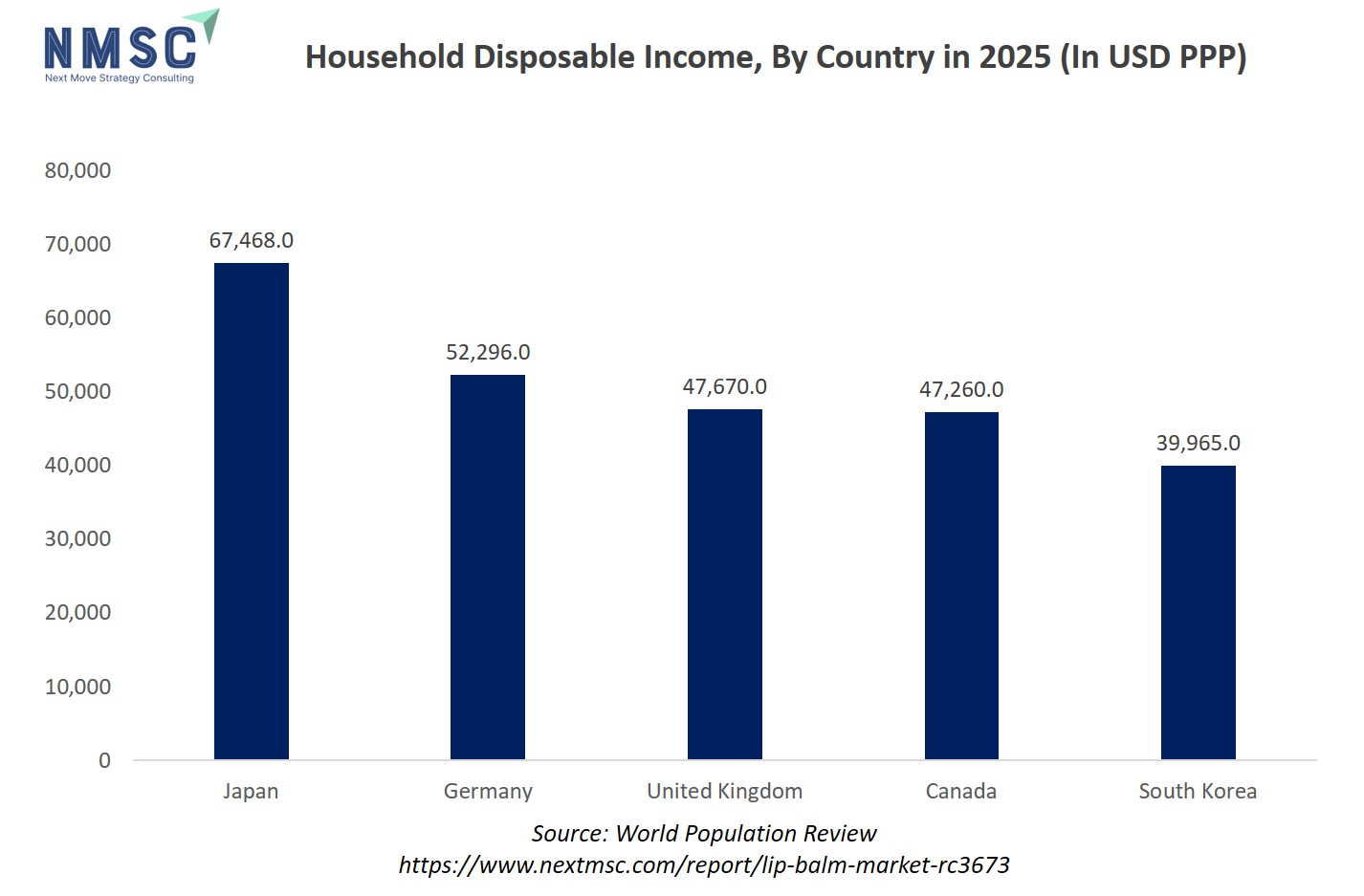
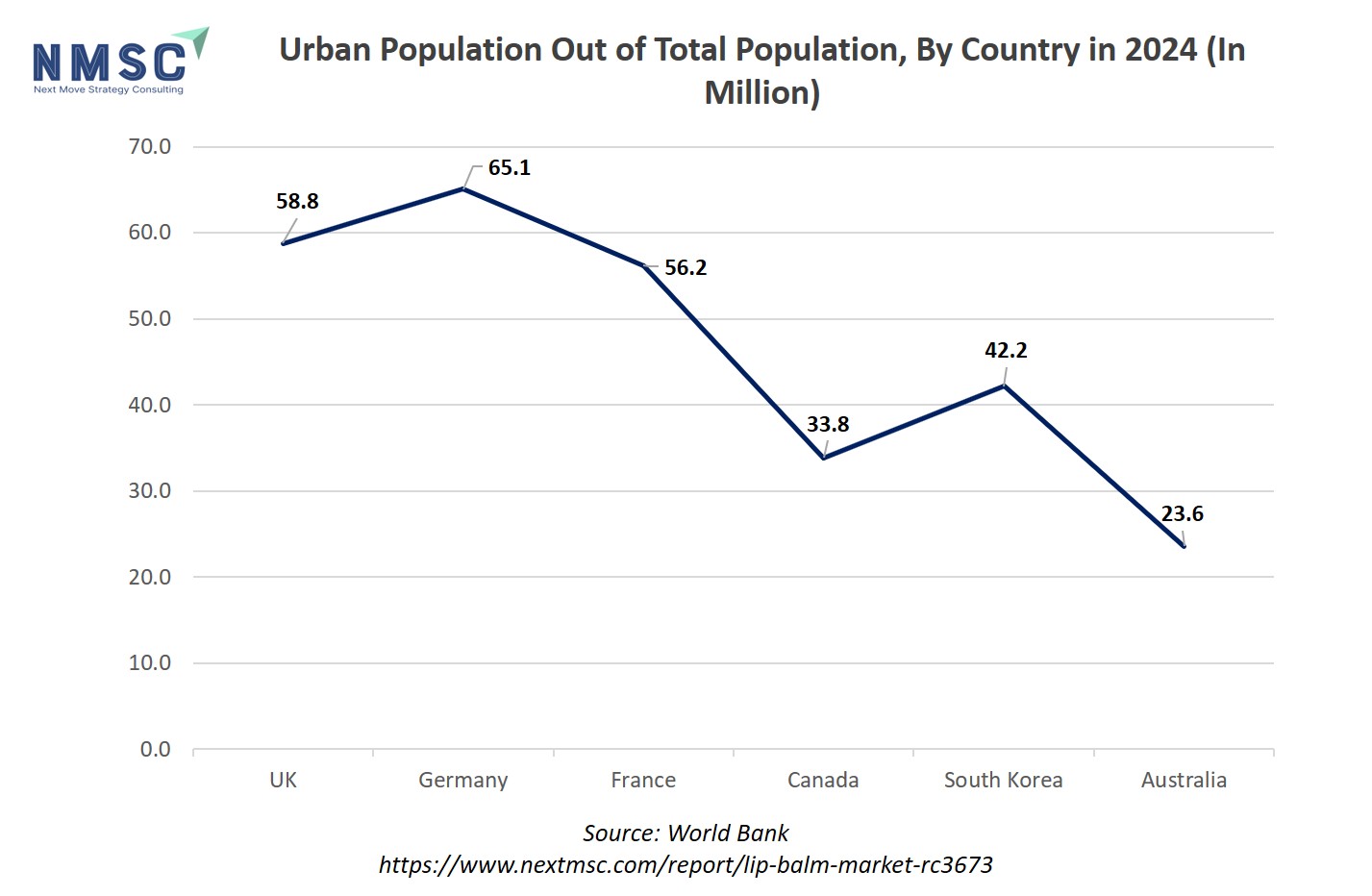
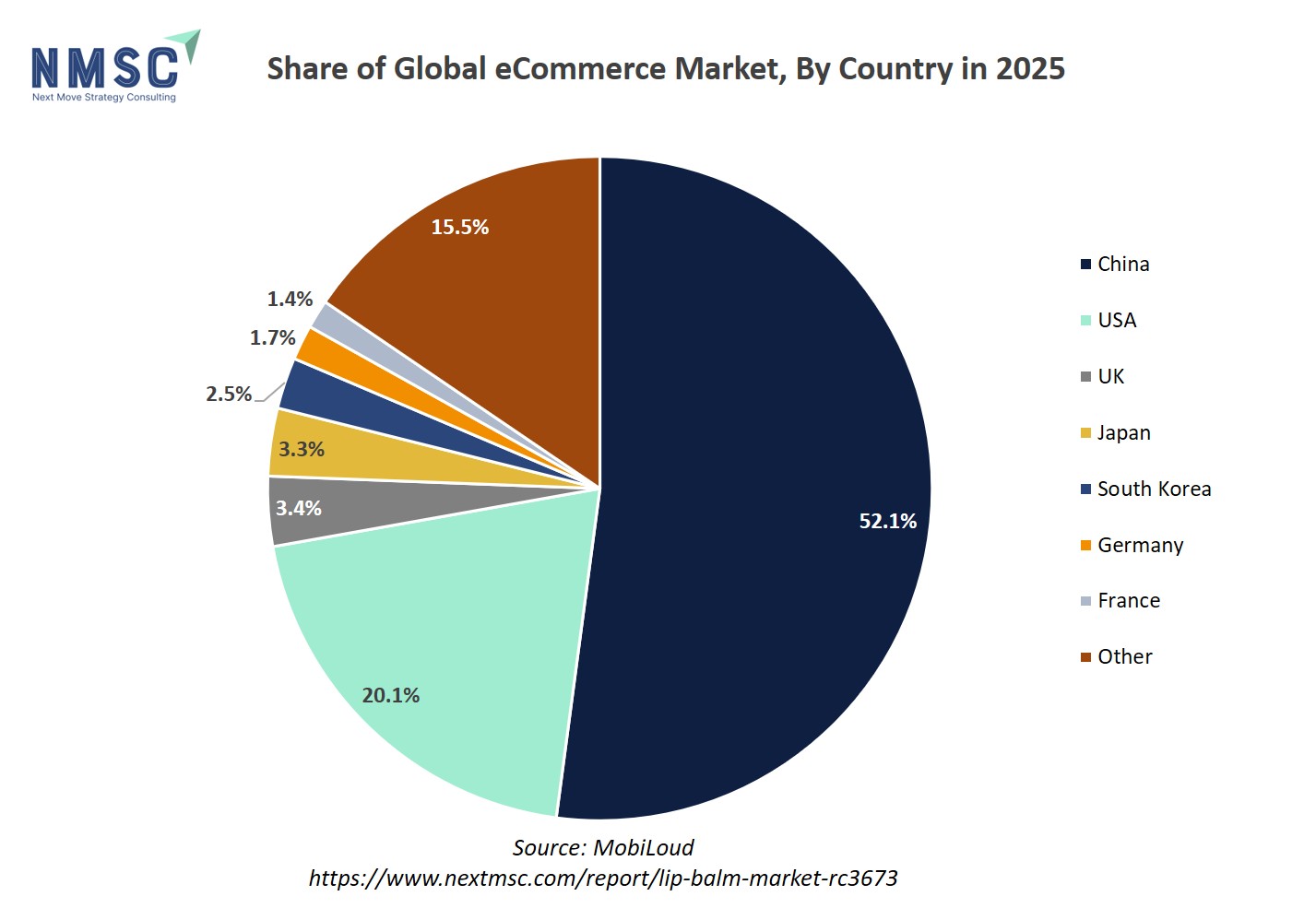
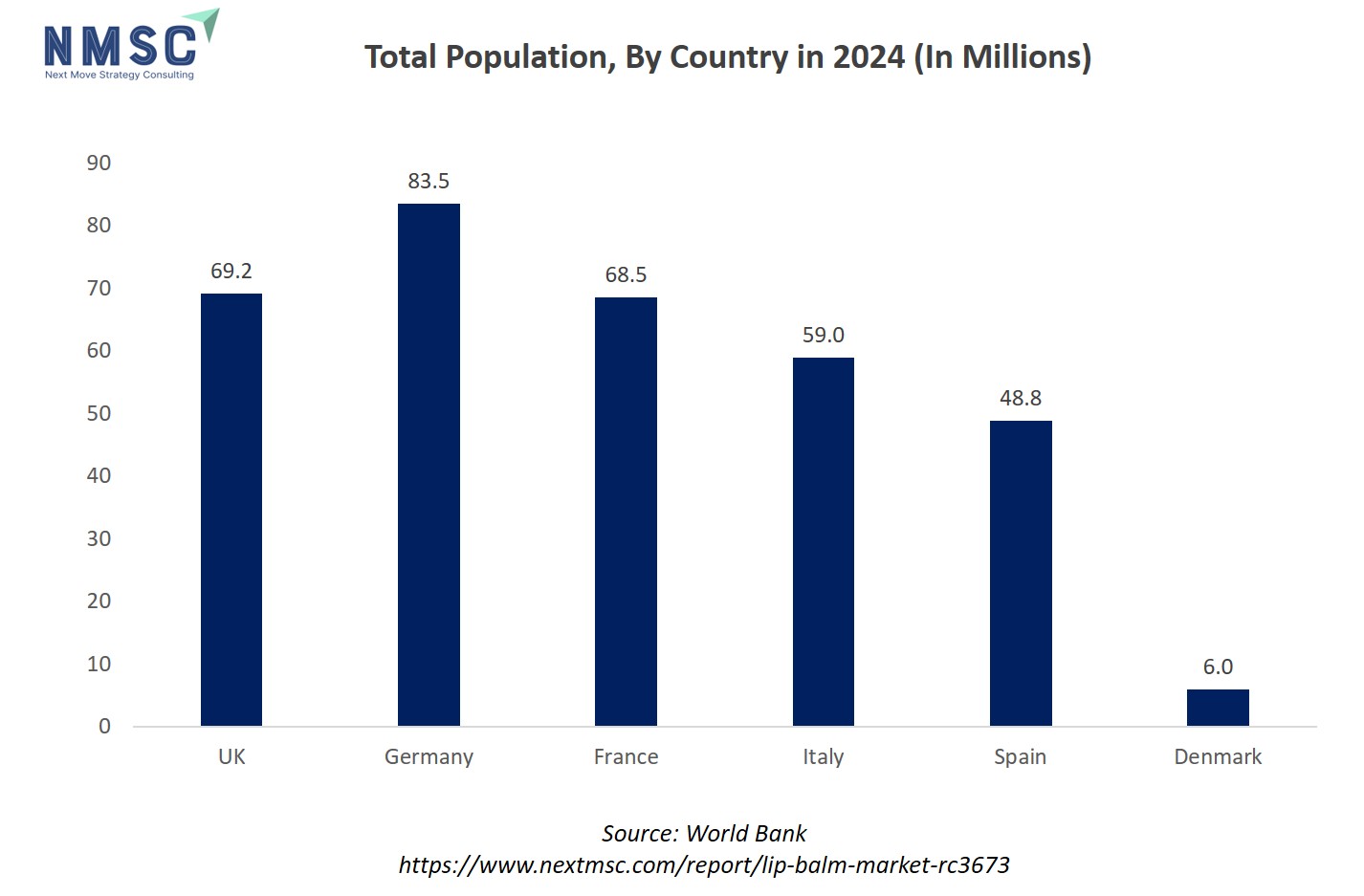

















 Speak to Our Analyst
Speak to Our Analyst



